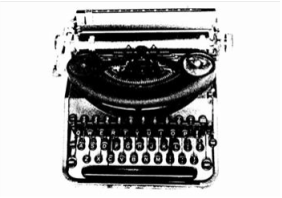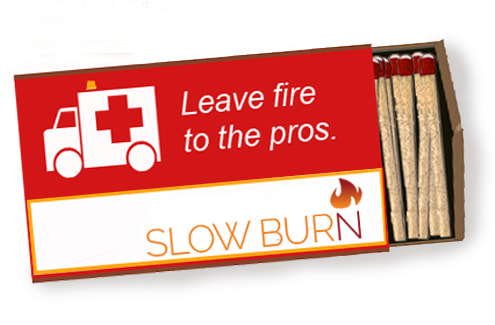 PERSONAL BRAND REDUX Last week, we dove into personal brand for a gentlemen who's a copywriter at a radio station group. Based on all the cards and letters and Facebook comments, some of you found that really useful, which is gratifying. And you may be glad to know we're venturing there again. Hard not to, really, when one receives a missive like this: "How about branding when it's just you who is the product? How do you brand a person who is, say, a Midwestern white woman and has no idea what the crap her brand is? "But enough about me. How about branding for solopreneurs when what they are selling is subjective, like art is to some people, not a hard and fast product? WE'VE SORT OF COVERED THIS BEFORE--BUT WAIT, THERE'S MORE I happen to know that the woman asking this question is an actor, so I'm going to infer that she's posing the question as an actor and an artist. The first part of this question is a really good one. How do you brand a Midwestern white woman who has no idea what her brand is? On the face of it, it sounds as if this woman is implying that "Midwestern white woman" is code for "dime a dozen," "uninteresting," or "boring." If that's the case, here's my first suggestion: tell that to Edie McClurg. That woman has made a fortune being a Midwestern white woman. If you don't know the name, you probably know her as Principal Rooney's secretary in Ferris Bueller's Day Off. She's the one with the upper Midwestern accent (don'tcha know), sniffing WiteOut at her typewriter and saying that Ferris Bueller is a "righteous dude." ONE DOES NOT GET MUCH MORE MIDWESTERN THAN EDIE The Fabulous Honey Parker and I know Edie, and can assure you: she is one extraordinary and hilarious woman. We've watched her at a party engage in competitive improv with another actor friend of ours, and it was one of the most relentless moments of live comedy we've ever witnessed. In fact, that other friend of ours has also been profiled here as a stellar example of personal brand. His name is M.C. Gainey, and his IMDB filmography lists all the characters he has played, from "Man In Cell" and "Big Jim," to "Tiny" and "Swamp Thing." He's a large man from Mississippi who (despite being a classically trained actor) has capitalized on his size and ability to seem dangerous. He could have easily said, "How does a big lug from Mississippi brand himself when he has no idea what the brand is?" WELL, WHAT ARE YOU GOOD AT AND HOW DOES THAT TRANSLATE INTO A CASTABLE PERSONA? Going back to the Midwestern white woman angle, Edie McLurg has absolutely defined her personal brand as the white woman with the cheery, upper-Midwestern accent. According to Wikipedia, she's been cast as that person in 90 films and 55 TV episodes. In fact, she apparently goes to auditions where she sees casting specs calling for "An Edie McClurg type." On a similar note, a friend and Hot Shots subscriber who can do big, booming comedy VO, once found himself in an audition for a "Gary Owens type," and he was sitting in the waiting room with Gary Owens. These are largely unassuming people who figured out a well-defined persona that makes the audience feel something. To which I ask... SO, WHAT'S YOUR PERSONA AS A MIDWESTERN WHITE WOMAN? You're obviously not Edie. She's got that covered. Are you the anti-Edie? Are you the sinister Midwestern mom? Are you the deadpan Midwestern spinster? Are you the Midwestern nuclear physicist mom? Especially in the world of casting actors, the more readily you can define your type, and the easier you can make it for casting directors and other decision makers to understand how they should feel about you, the more readily they can point and say, "That one!" See also last week's screed where we invoked the names of well-known comedians. SEE ALSO: CHARLES SPENCER CHAPLIN The man was a generalist. He was a performer in the tradition of British Music Hall and Vaudeville, a writer and a composer. When he was brought to the US by the prestigious Fred Karno company, he was scouted for the film business. So he eventually added "movie actor" to his resumé. But it wasn't until he took a huge pair of pants and an enormous pair of shoes from Fatty Arbuckle's wardrobe, and a too-small jacket from Harold Lloyd's wardrobe, added a cane and a bowler hat and a little brush mustache, that Charlie Chaplin became a huge-selling brand. His beloved and downtrodden little character, The Tramp, is iconic. He didn't say, "I can do everything, I shouldn't pigeonhole myself." Instead, he made his own pigeonhole and lived in it. OF COURSE, HE WAS ALSO IMMENSELY TALENTED--WHICH HELPS Chaplin was an artist of the first order. Which leads us to the second part of the actor's question, to wit: how to brand something subjective, such as art. It all goes back to everything said above, i.e. persona, and the requirement of focus. In the past, we've talked about the photographer of sun-drenched mountain landscapes, Ray Crosby. Ray Crosby's Sunmill Studios is (a) an art business, (b) distinctly about one kind of photography, and (c) about subjective appeal. It's calculated to make the customer feel one thing. And it's not for everyone. A lot of people would regard Crosby as "easy to like" and not be interested. Which is fine. Crosby doesn't care. He knows who his customer is and isn't worried about who his customer isn't. I also happen to know that Crosby, under another name, is also a sometimes sports photographer and a real estate photographer. That other name is Blaine Parker. THE RAY CROSBY BRAND IS A NECESSITY Blaine Parker can't possibly be taken seriously as a writer, a branding consultant and a VO performer as well as a fine art photographer. It's just too much. One of these things is very much not like the others. And art is so subjective, and the customer so needs to feel one thing and one thing only about the art, that the alter ego and standalone brand are a requirement. So, again, what is the one thing that the customer should feel about the brand? Sunmill Studios is so obviously about a "photographer of light" brand that there really isn't much question. The customer should feel captivated by rich, dense, vibrant sunrises, sunsets, mountain vistas, forests and snowscapes. If not, then that person is not the customer. Another example of a polarizing art brand is the late Thomas Kinkade, the Painter Of Light. His endless paintings of homes lit from within by a warm glow have sold for enormous amounts of money and made him a very wealthy man. FANS LOVE HIM. ART CRITICS HATE HIM. Which all goes to an important point: as long as your brand is authentic and resonant, it doesn't matter whom you alienate. It matters only that you appeal to the right person. Art critics hate you? No problem, as long as your well-defined art buyer loves you. It really doesn't matter what the business model is, as long as you understand your customer (the buyer) and make that person feel the right thing about your brand. Subjectivity be damned. You're never going to appeal to everyone. So don't try. Refine your brand and appeal to the one person who matters. You'll be much happier--and much wealthier.
0 Comments
Leave a Reply. |
AuthorBlaine Parker is prone to ranting about any and all things related to brand. In many ways, he is a professional curmudgeon. While there is no known vaccine for this, the condition is also not contagious. Unless you choose it to be so. Archives
February 2022
Categories
All
|
|
© Copyright 2020 Slow Burn Marketing LLC |

 RSS Feed
RSS Feed

